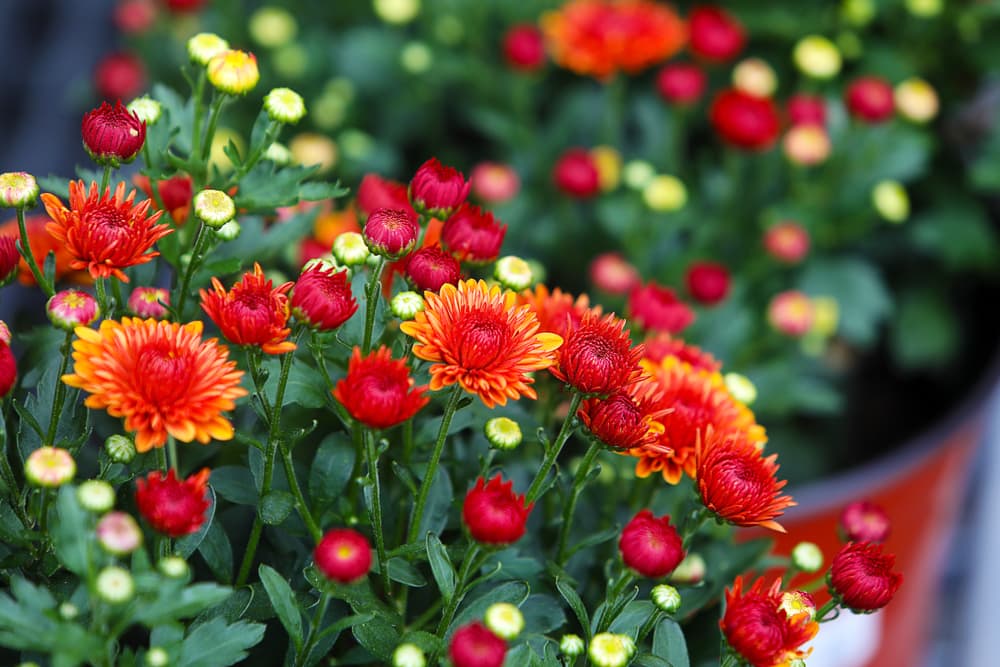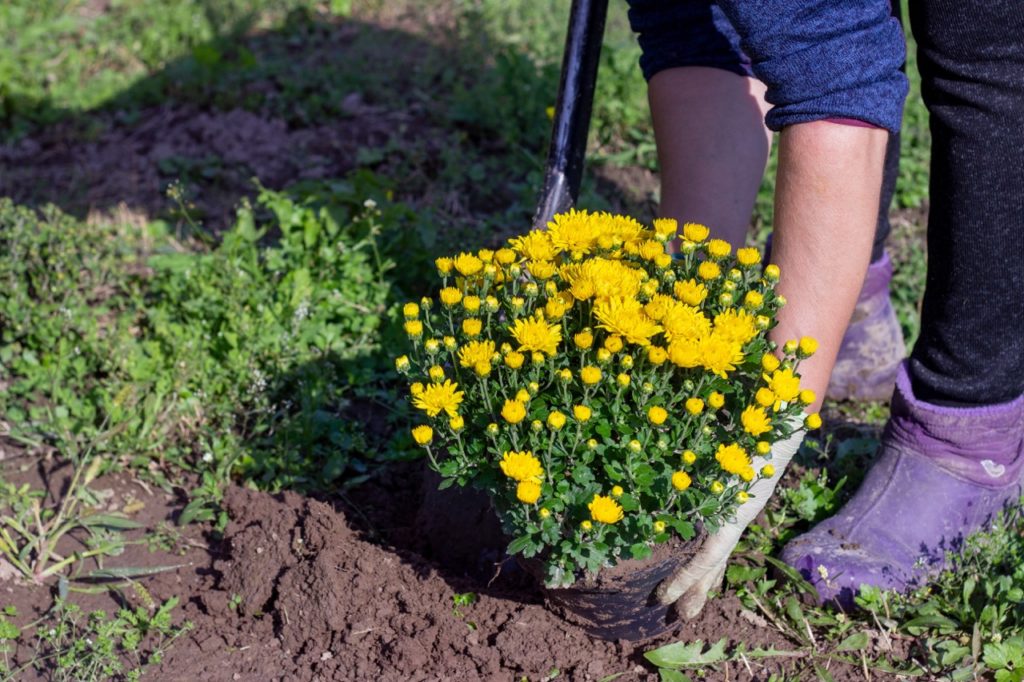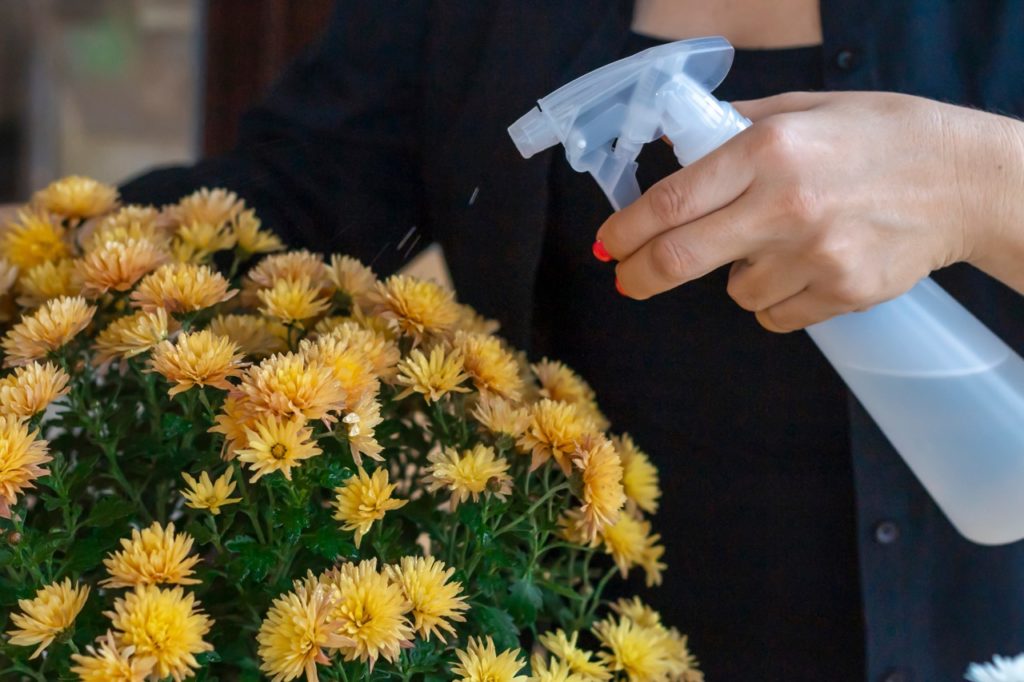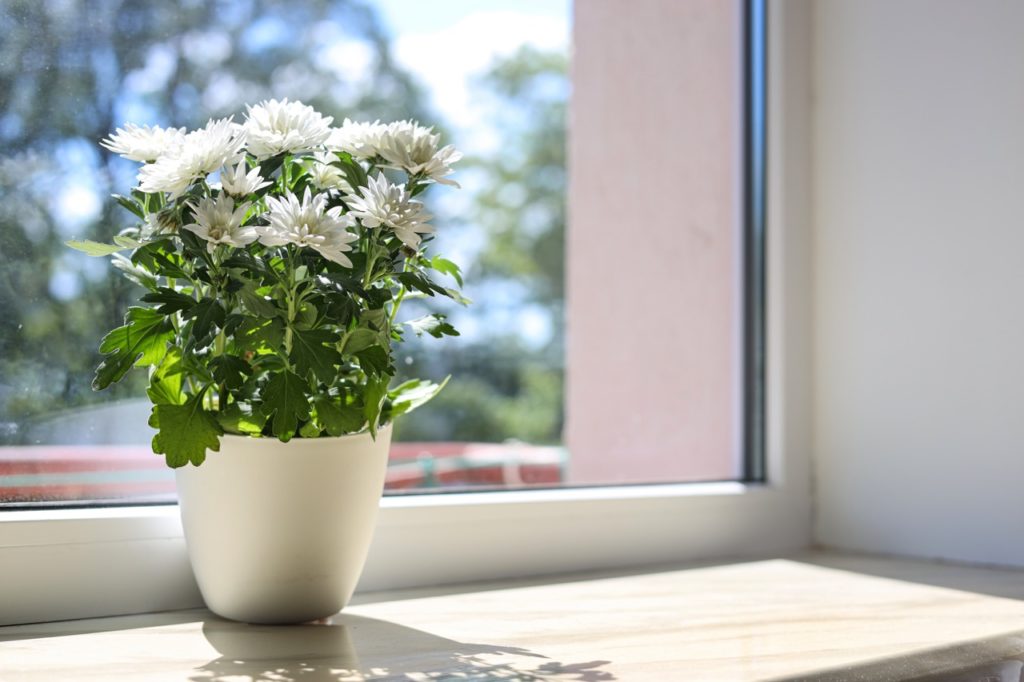Container Chrysanthemums – Experts Recommend Pot With At Least 30cm Diameter

PERENNIALS > CHRYSANTHEMUM > CONTAINERS

Elizabeth is a Permaculture Garden Designer, Sustainability Consultant and Professional Writer, working as an advocate for positive change. She graduated from the University of St. Andrews with an MA in English and Philosophy and obtained a Diploma in Applied Permaculture Design from the Permaculture Association.
Reviewed By COLIN SKELLY

Colin is a Horticulturist and Horticultural Consultant with experience in a range of practical and managerial roles across heritage, commercial and public horticulture. He holds the Royal Horticultural Society’s Master of Horticulture award and has a particular interest in horticultural ecology and naturalistic planting for habitat and climate resilience.
IN THIS GUIDE
CHRYSANTHEMUM GUIDES
Container Growing
Growing From Seed
Not Blooming
Varieties
Chrysanthemums are versatile plants which come in a range of different varieties, with diverse blooms in a staggering array of colours.
Some are quite hardy and can sometimes even be grown in the garden year-round, while others must definitely be brought indoors over the winter months.
Can You Grow Chrysanthemum In Pots?
Chrysanthemums can be an excellent choice for container planting.
Hardier garden chrysanthemums make wonderful displays for an autumn garden, while later flowering, more tender types will bloom indoors in a cool room over the winter months.

Growing chrysanthemums in pots can require a little more work than growing them in the ground over the summer but can make things easier when it comes to moving chrysanthemums of both types indoors for winter.
Dwarf types are naturally well-suited to container growing.
Choosing A Plant Pot
When choosing a container for your chrysanthemum, it is best to select a pot which is at least 30cm in diameter.

As these are plants which require relatively free-draining conditions, it is important to ensure that you choose a container which has good drainage at the base.
If you are growing a taller type, remember that it will need staking and the pot should be heavy and stable enough to prevent it from toppling over.
Choosing Compost
The best way to fill containers for chrysanthemums is with a peat-free John Innes No. 2 compost or a homemade equivalent.

Add an organic mulch (such as a homemade compost) over the tops of the pots to retain moisture and add slow-release fertility.
Potting Up Chrysanthemum
Chrysanthemums can be purchased as newly rooted cuttings or young plants in spring, established young plants in early to mid-summer, or as mature plants in full bloom in late summer or early autumn for an instant display.
Pot up the plant you have chosen as required if it is pot-bound in its existing container.
How Many ‘Mums’ Can You Plant Per Pot?
One chrysanthemum is typically planted in a pot of at least 30cm in diameter.
However, you can use a larger container and plant several chrysanthemums at the same time.
You might also plant up a mixed larger container display with other plants which like similar conditions and which will aesthetically complement your selected chrysanthemum plants.
Remember, the larger the containers you have, the less watering will typically be required, since they will dry out more slowly.

“The type of pot will also influence the rate of drying,” shares Master Horticulturist Colin Skelly.
“Plastic pots retain moisture within the pot whilst terracotta pots allow moisture to evaporate.
“The choice will be a trade-off between the size of the pot, its position and the style of the garden.”
However, make sure that you will be able to move your containers when you need to do so at the end of the growing season.
‘Mums’ Container Care
Water regularly, especially during dry periods over the summer.
Never let the growing medium dry out entirely, but take care not to overwater or cause waterlogged conditions.
Feed with blood fish and bone to boost growth in April and apply a nitrogen-rich feed to encourage good lush foliage growth in June.
Feed early flowering types with a weekly high-potassium feed (such as comfrey tea) during flowering.

Pinch out young plants once they reach 20cm in height.
Disbud and deadhead as desired to improve blooms or prolong the blooming period.
In mild areas during winter, you may get away with placing container-grown chrysanthemums in a more sheltered spot outdoors out of extreme cold and wet conditions.
However, it is usually best to move containers with chrysanthemums which have already flowered undercover to a frost-free location where the plants can overwinter in a dormant state.

Those more tender types or those that are yet to flower should be potted up and moved indoors, into a cool room inside at around 10°C where they should then flower over the winter months.
Take cuttings in spring to propagate new chrysanthemums for your container garden.
Look out for problems like yellowing leaves or a lack of flowering, which could suggest a problem with environmental conditions or care, and also remain vigilant for other signs of pests and diseases.
If you take good care of your chrysanthemums throughout the year, they should grace your container displays for several years to come.
